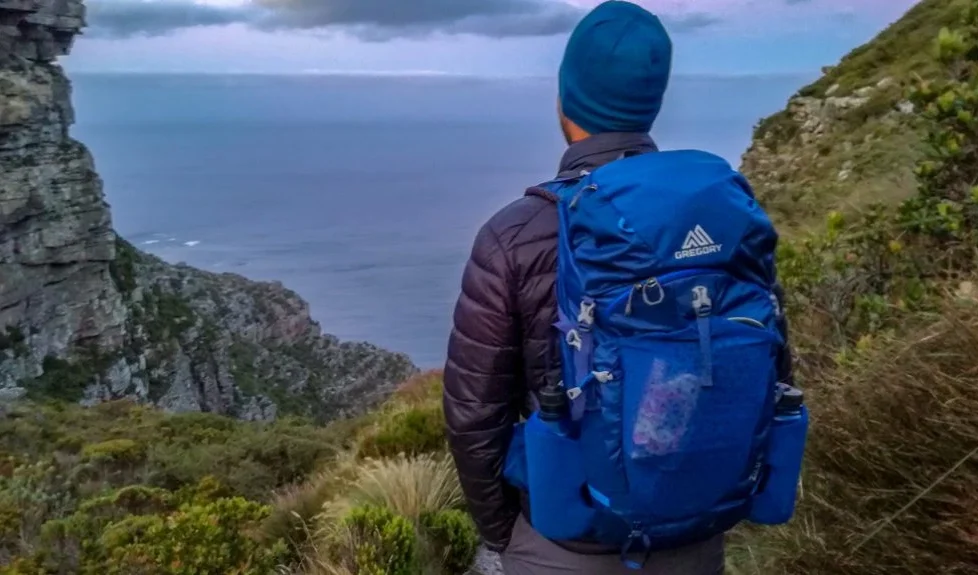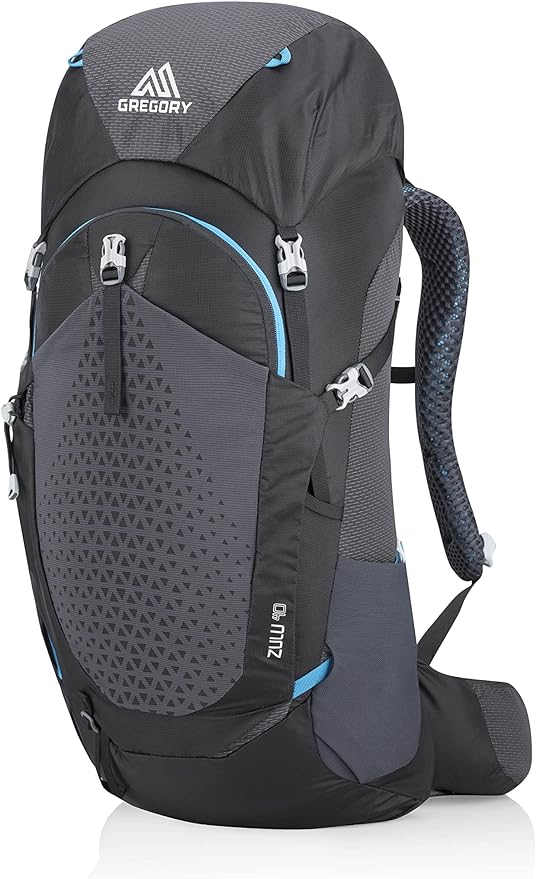A Detailed Review of Gregory Zulu 40 Backpack

This robust gadget, the Gregory Zulu 40 backpack, is designed to support big weights up to 35 pounds. This is a reliable option, as seen by the suspension system’s rigidity and accurate operation. The shoulder straps and hip belt of the Zulu provide padding, making it comfortable to carry heavyweights. The rear’s integrated ventilation system prevents sweating. However, the stiffness of the suspension system limits mobility. Gregory Zulu 40 backpack is therefore better suited for trails than alpine scrambles.

The Gregory Zulu 40 backpack Cross Flo DTS suspension system consists of an HDPE frame sheet, a spring wire “X” frame, and a mesh rear panel shaped like a trampoline. The yoke that the shoulder straps are fastened to is pulled up on the wireframe above the point where the wireframe crosses to form the “X.” This unique mechanism builds up stress in the frame when weights press down on the shoulder harness.
Consequently, the air space above the lumbar area is kept appropriately because the mesh back panel is enclosed. The most cushioning is found in the hip belt and shoulder strap. These features increase the pack’s ability to support heavier loads without sacrificing comfort. However, the pack does not move with the user in the same seamless manner. The shoulder harness is permanent and cannot be adjusted. Conversely, the Zulu is available in three different sizes.
One of the pack’s biggest useful benefits is its stability. The pack’s capacity to compress provides evidence of its stability. An additional factor contributing to Zulu’s stability is the presence of control straps at the hip belt. The weight is equally distributed over the lower back thanks to the dual-density hip belt.
The Gregory Zulu 40 backpack doesn’t have an extension sleeve, but it does have a roomy lid with the typical zipped top and bottom compartments. A stretch bucket pocket attached to the upper compression straps covers the face of the pack. Conveniently, a U-shaped zipper extends all the way to the pack’s bottom. There are stretch pockets on the bag’s two sides. Every hip belt features a separate pocket; one is composed of water-resistant nylon, while the other is constructed of open mesh.
In body areas prone to abrasion, the Gregory Zulu 40 backpack is composed of 210d nylon, while in other areas, it is constructed of 100d. This provides maximum weight carrying without compromising robustness. The wire “X” frame is well-made and measures 4 millimeters in diameter. The outside pockets’ stretch mesh is significantly denser, which is encouraging for a fabric that tends to snag easily. The buckles are larger and more traditional in design, staying away from the minimalistic approach that many rival packs are using these days.
Extras The Zulu 40 was enhanced with an inner hydration bladder sleeve and hang loop, a top rope/compression strap, attachments for an ice tool or trekking pole, and a sunglass loop on the shoulder strap.
I weigh 165 pounds, stand 6 feet tall, and have a torso that is just about 20 inches long. Having discovered that my 60L Osprey Aether pack was too big, I tried a few different models with a 40L capacity. My favorite was Zulu because it was perfect for my nighttime travels and hostel hopping.
The belt and straps are easy to use. While not as thick as that found in Gregory expedition packs, the cushioning is sufficient for the weight that is meant to be carried. With ample space, the top pocket may hold a map, a first aid kit, a GPS, food, and a headlamp. The stack pocket is helpful when it rains a lot. It has come in handy numerous times during my need for it.
It is not advisable to put heavier or smaller goods in the open top pocket as they could fall out when the inverted U-flap is opened. It would be best to put them in the two little zipped hip-belt pockets, the top “brain” pocket, or the rain cover pocket. The Zulu does away with the need for a separate compartment and provides convenient dual access. The front opening flap has an elastic pocket that is perfect for holding a hat, vest, or jacket.
The top straps’ purpose is to compress the pack vertically while holding the top “brain” compartment in place. The side stretch pockets are firmly fastened in place by two straps on either side. Because of this, carrying items like water bottles in the side stretch pockets is inefficient. However, those pockets might also contain a stove.
The Zulu has a small access hole at the upper rear of the pack and a 2L water bladder pocket in the main compartment. However, I don’t like that my water is right next to my clothes and sleeping bag. I therefore use a small bladder in one of the side stretch pockets together with a hose system, which is rather convenient for me.
The front of the pack features top elastic cords and bottom loops that can be used to attach ice axes or poles.
I can fit nicely in the Medium (40L) Zulu and it can hold up to 15 pounds. The X-frame construction, suspended mesh panel, hip belt, shoulder straps, load-lifter straps, and sternum strap, as well as the medium-thickness padding on the lower back, all contribute to this. I often use a Zulu daypack for both trekking and photography equipment. The Zulu manages my thirty to thirty-five pounds quite nicely. I use this all-purpose bundle throughout the year. It can also be used for mountaineering excursions. The fact that the side pockets are worthless for holding water is my only grievance.
The Zulu has proven to be an excellent choice for overnights and hostel hopping. As a result, users have given it 4 stars.
There are many others in the market that are really good when it comes to weight, carrying capacity, and many other features like Gregory Stout 75 which is excellent in its line if you looking for something easy on the pocket and user-friendly then you must check this.
Disclaimer: This page contains Affiliate Links to brand's websites. When you make purchases on their sites using these links, we may earn a commission on your purchase at no additional cost to you. (Disclamer)
